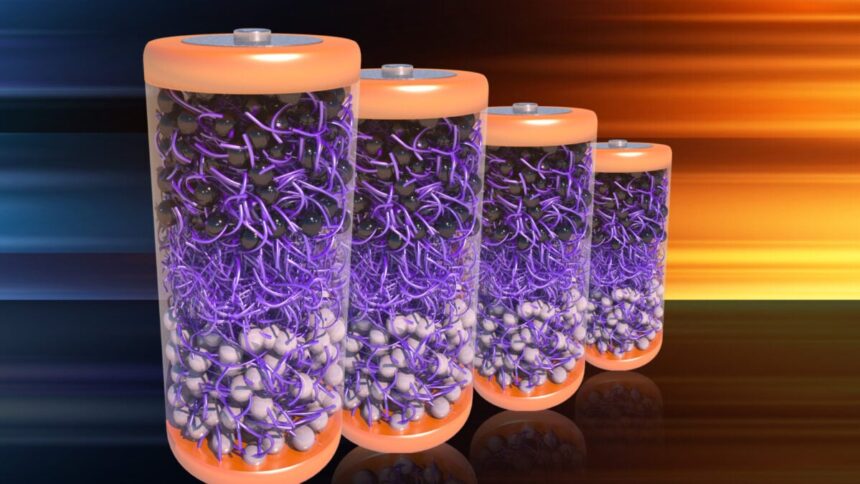The irony of eco-friendly electric vehicles is the mountainous load of electronic waste they produce. So far, most targeted efforts to recycle EV batteries have been expensive and chemically toxic—and they haven’t stuck. That could change soon, however, thanks to a promising breakthrough from MIT.
In a Nature Chemistry paper published August 28, researchers describe a new type of self-assembling material that easily dissolves in organic solvents. It works reasonably well as the electrolyte in a solid-state battery cell—the design major EV producers are racing to implement. Notably, the process doesn’t require the harsh chemical and thermal conditions that make EV battery recycling so difficult, offering promising opportunities for recycling the batteries at scale, the researchers said.
“Our approach is to start with easily recyclable materials and figure out how to make them battery-compatible,” Yukio Cho, study lead author and a material scientist at Stanford, told MIT News. “Designing batteries for recyclability from the beginning is a new approach.”
Actual magical origins
The inspiration for this “recycle-first” approach came from a scene in Harry Potter, Cho said, in which Professor Dumbledore magically fixes an old house with the flick of his hand.
To replicate that kind of magic in EV batteries, Cho and his colleagues took a closer look at the functions of each battery component. They found that the trickiest—yet most foundational—part was the electrolyte, which transports lithium ions between the positive cathode and the negative anode. It also made sense to focus on the electrolyte from a recycle-first perspective, since electrolytes are highly flammable and decay into toxic, hard-to-manage waste.
For their “magical” electrolyte, the team chose aramid amphiphiles (AAs), a class of molecules that self-assemble in water and, surprisingly, mimic the chemical structure and stability of Kevlar. They then attached polyethylene glycol (PEG), which conducts lithium ions, to one end of each molecule.
When the team exposed this molecular system to water, they found that it self-assembled into a nanoribbon structure capable of carrying ions across its surface—that is, a functioning electrolyte.
Can the magical material make a magical battery?
The next step was to make sure that this material could reasonably function inside real batteries. To test their creation, the team first ran experiments that subjected the material to the kinds of stress involved in building and operating a battery. The nanoribbons passed this quality check with flying colors.
Next, they constructed a solid-state battery cell using materials common to actual batteries: lithium iron phosphate for the cathode and lithium titanium oxide for the anode. The electrolyte, of course, was constructed from the team’s new magic material.
This test produced mixed results. While the nanoribbons successfully shuttled the lithium ions between the electrodes, the ions occasionally buffered during fast-paced charging and discharging, the researchers reported.
Flagging this stage for further investigation, the team then dropped the battery cell into an organic solvent, where it dissolved like “cotton candy” in water, Cho recalled.
Magic can’t solve everything
“We don’t want to say we solved all the problems with this material,” Cho admitted. The proof-of-concept demonstrated promising results, but the battery performance was far below industry standards, he said.
That being said, what the researchers are imagining for this material—in the near future—is more an electrolyte that integrates this material, maybe in a layer or two, and not necessarily the entire battery. Even a small section of the battery made from this material can easily kick off the recycling process, Cho explained.
The stakes are high. EV sales keep climbing. Lithium supplies famously aren’t. If the EV industry takes a liking to this material, it could open new opportunities for recycling lithium waste at scale. But the team will have to demonstrate that the investment is truly worth making—the sooner the better.
Correction: A previous version of this article incorrectly stated that the negative electrode of a battery cell was an “electrode,” when it should have said “anode.”
Read the full article here










